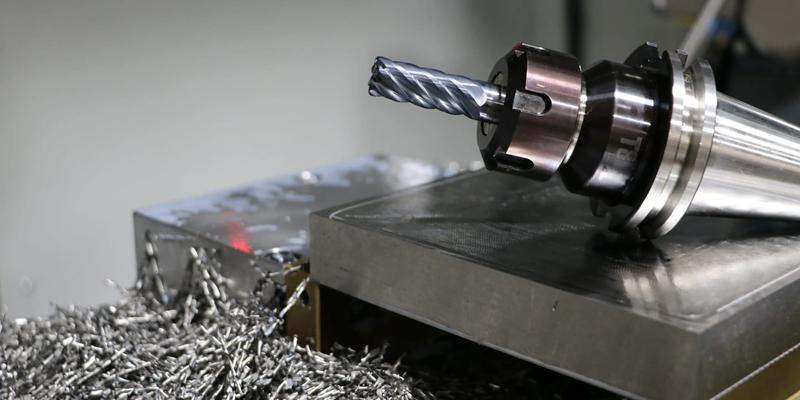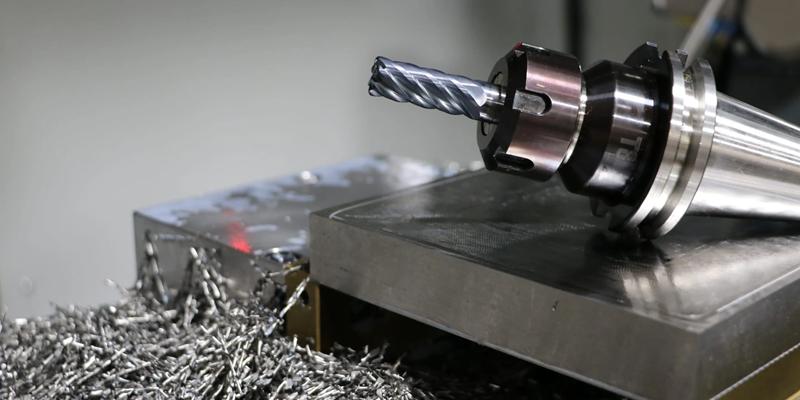
CNC milling is a highly versatile machining process that uses rotating cutters to shave portions of a part until the desired shape is achieved. The most common milling cutters are end mills, face mills, plate mills, impact mills, etc.
Of all these cutting tools, end mills are unique and have a wide range of applications. They are unique milling tools designed specifically for end milling processes. In this article, we will discuss end milling operations in detail. Let's get started right away.
What is end milling?
End milling uses a special cutting tool, an end mill, to make axial cuts in a workpiece. It is an aspect of the milling process used for specialized applications such as producing die cavities, profiles, slots, contours, shoulders, and other milled parts.
Like many cutting tools, end mills have many cutting teeth at the ends but additional cutting teeth on the peripheral sides. Therefore, they are suitable for frontal and circumferential cuts. These cutters can make precise cuts, making them practical for a variety of applications, including engraving and manufacturing machine parts.
When should you use an end mill?
End milling offers some features that are not available in many other machining processes. End mills are relatively small tools suitable for high-precision cutting in complex metal work.
Below are typical operations that require end milling operations.
- Cut
- bypassing
- Surrender
- Profile milling
- Traditional thinning
- tactile milling etc.
Different Categories of End Mills
End mills are categorized based on shape, number of flutes, type of material, etc. Let's take a closer look at the different types of end mills within this classification.
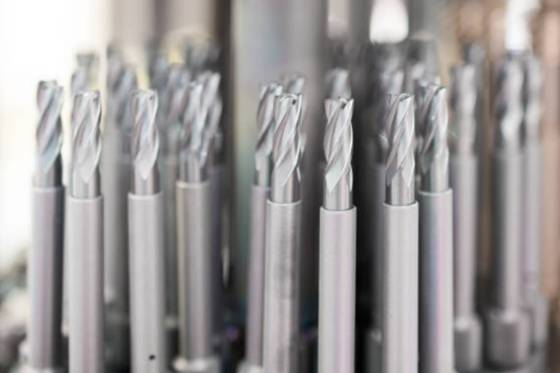
End mill type: Classification by shape
Based on the shape of the parts, end mills can be divided as follows.
● V bits : Cutting teeth have a small angle, usually 60° or 90°, forming a V-shaped cutting edge. This makes them suitable for narrow and small cuts. They are also used for lettering, engraving complex details, and making signs.
● Square cutter : They are also called flat cutters. These cutters have a sharp, square edge, making them suitable for 90° cuts in the workpiece. They serve as general purpose end mills for face milling, side milling, etc.
● Ball nose cutter : These cutters have a rounded cutting edge that gives the piece a better surface finish. They are suitable for milling contoured surfaces, shallow channels, etc.
● Fishtail end mill : These cutters have cutting teeth aligned with one end, which is usually flat, so they can cut any material, including thin sheets. It reduces chipping of the workpiece and is suitable for making flat-bottomed pockets, plunge milling, precise contouring, etc.
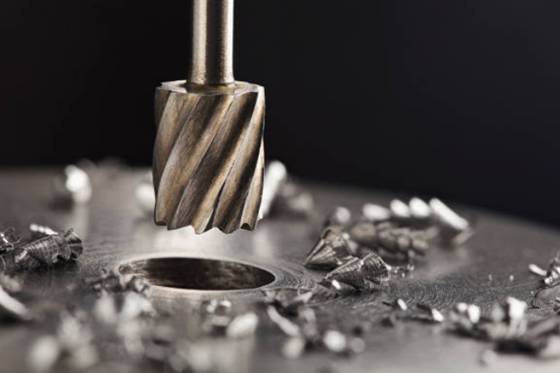
End mill type: Classification according to the number of cutting edges
Flutes are spiral grooves on the cutting edge of end mills that allow the removal of chip formation during cutting. Endmills typically have 2, 3, or 4 flutes, with 3-flute endmills being less common than the other two.
The increase in the number of flutes leads to greater advancement of the cutters and the production of cuts with better surface quality. However, a smaller number of flutes means better chip evacuation and less heat generation. Therefore, manufacturers may need to consider the material they are working with before deciding on the type of end mill they will use in their manufacturing.
●2 Groove cutters are ideal for aluminum and wood because they are softer and produce larger chips.
● 3-flute end mills have good chip removal and average wear resistance.
● 4 flute end mills are best suited for cutting parts considered too difficult to machine with 2-edge end mills. Furthermore, these are the most common types of end mills used in machine shops.
End mill type: Classification based on material
End mills are usually made from cobalt steel alloys (high-speed steel) or tungsten carbide. Another option is cobalt end mills.
● End mill made from high speed steel (HSS) : They are relatively cheaper than carbide but have lower speed capability and slightly shorter lifespan.
● Tungsten carbide end mill : They are more expensive than HSS but offer more toughness and wear resistance. They are also very heat resistant and are best suited for machining the toughest materials, even at high speeds. Carbide end mills are often used for industrial applications.
● Cobalt end mills : They are also more expensive than HSS and offer greater rigidity and wear resistance.
Advantages of using end milling operations
End milling is an aspect of CNC milling with several specific specifications. Below are some of the advantages of this milling process.
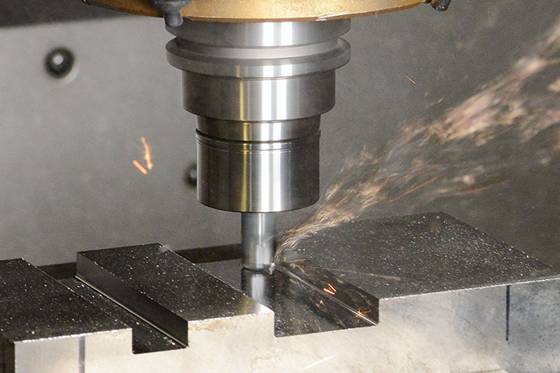
High versatility
Milling processes are among the most versatile machining processes with the highest level of flexibility. For example, end milling is ideal for various applications such as contour milling, profiling, scanning, plunging, etc.
High precision and accuracy
As with any typical CNC machining process, the final milling process is controlled and regulated by computer codes and programs. Therefore, cuts have greater precision and accuracy, crucial for parts with strict tolerance requirements.
Large selection of materials
End milling is suitable for a wide range of materials – metals like aluminum and steel, non-metals like wood and plastics, and even composites. Any solid material is suitable for end milling operations.
Fast and efficient process
With these machines, operators only need to enter the codes necessary for the process. Then the cutting begins. With less human interference, fewer mistakes are made, which in turn increases the efficiency of the process.
Furthermore, the process is highly automated and can be run continuously for long periods of time, ensuring accelerated product manufacturing. CNC milling machines allow manufacturers to produce parts in hours rather than days or weeks as with traditional machines.
Suitable for complex manufacturing
End mills are suitable for producing complex structures with high tolerance specifications. They manufacture dies, slots, shoulders, housings and other machine parts.
Differences between end milling and drilling
Here are the main differences between the two editing methods.
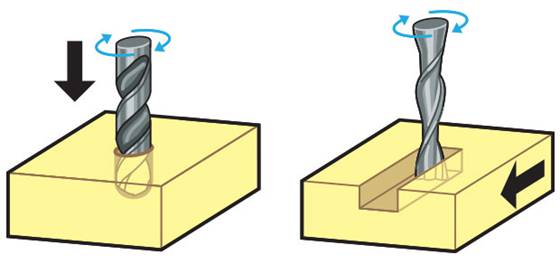
●Although end milling is suitable for numerous applications such as machining grooves, contours, profiles, cavities, etc., drilling typically creates holes in a workpiece.
● End milling uses cutters that can cut in both directions. End mills make axial and lateral cuts. When drilling, the bit is plunged into the material and leaves a precise hole.
As both processes require special cutting tools, we would also like to discuss the differences between the cutting tools.
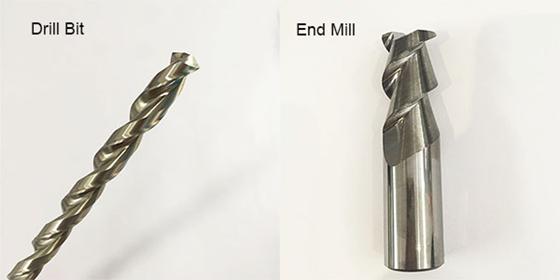
Drill vs. end mill
●If you look at the tips of drill bits, you will notice that they have a conical shape, except for diamond drills that have flat tips. End mills can have different shapes depending on the specification. The choice of end mills is usually based on manufacturing requirements and work materials.
●While drills have their cutting teeth prominent and conical towards the cutting tips, end mills have their primary cutting edges on the periphery (on the sides) and the rest on the tips.
● In fact, end mills can make holes. However, unlike drill bits that can drill holes in a part, end mills require a pre-drilled hole.
● End mills can produce flat surface cuts due to circumferential cutting operations, while drills can only cut vertically, producing cylindrical or conical cuts in the shape of a hole.
WayKen: Your partner for various milling processes
Simply contact us to receive an immediate quote and DfM analysis.
Concluding
End milling is an extremely versatile manufacturing process with numerous possible applications, especially face milling, profile milling and plunge milling. Like most computer-controlled processes, it is highly precise and produces products with high dimensional accuracy, which makes it valuable in the manufacture of machine parts.
Common questions
What are the main differences between end milling and face milling?
The main difference between these two milling methods is the cutting device. Face mills have a thin circular design with cutting teeth for horizontal cuts. End mills, generally helical, have cutting teeth on the face and sides, allowing frontal and circumferential cuts.
Can you drill with an end mill?
End mills are suitable for drilling holes in a workpiece. For example, center cutters can cut directly into a material and create holes in those parts. However, for applications that require precise holes, you will need to use a drill and reamer.
Why is an end mill called an end mill?
End milling differs from other CNC processes due to its unique cutting tool. End mills have cutting teeth on the sides and end of the cutter, hence the name end mill.

